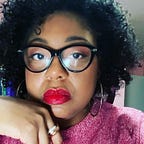Queer Eye: Stories Behind the Stories, Ep. 1
If you want to read the reason behind these posts, click here.
I was excited to learn that the Fab5 would be in Philadelphia, PA. Their time in Atlanta, GA; St. Louis, MO; and Japan was certainly well spent, but the landscape of the urban Northeast US and in particular the mid-Atlantic states is decidedly different. Philly, given its past and present, can sometimes come up woefully short as the city of brotherly love. I also think that in this current moment of national upheaval, their “heroes” could address some of the larger concerns that we’re all grappling with.
Since this is the first episode, it is worth talking about their intro! They recreate the painting “George Washington Crossing the Delaware” by Emanuel Leutze (at the Met currently) with Karamo as George Washington. Let’s just stop there. Karamo. Brown. As. George. Washington. Who is Karamo Brown? George Washington.
In the original painting, there is an indigenous person behind Washington. Instead, the Fab5 opt instead for two military personnel (represented by Antoni Porowski & Tan France). Some might call that erasure. But, given the genocidal settler colonialist project that was the US at that point in history, they made a great choice to not represent a coerced Indigenous person or play dress up and make indigeneity a costume.
Jonathan Van Ness and Bobby Berk sit in the front, facing each other, choosing also not to dress up as the Black person who was also in the original painting. Jonathan’s dress nods to the androgynous figure in the original painting, who is often thought to be a woman dressed in men’s clothing.
Before you think… oh this is Hamilton redux. We’ve seen this before. It isn’t.
Their choices on who to include, who to exclude, and who to replace highlight a commitment to retelling the national narrative with an eye toward consent: who was forced onto that boat symbolically, and literally. And, who had choice. Their playful reenactment also questions the very city in which they’ve come to do their work. If Philly were the city of freedom, what is holding folks back? And, the positioning of Karamo as George Washington brilliantly critiques the first president, the power of that position, and the preciousness with which we treat that history — all of which bear implications for our current president.
By the way, if you’re interested in histories of the United States that explore these ideas further, check out An Indigenous People’s History of the US (Roxanne Dunbar-Ortiz), An African American and Latinx History of the United States (Paul Ortiz), A Queer History of the United States (Michael Bronski), and A Disability History of the United States (Kim E. Nielsen).
“A gaggle of gays” — Tan France
This episode features Noah, a gay Lutheran pastor poised to celebrate his congregation’s 125th year in Philadelphia. Immediately, I know Bobby is going to be on edge. And I’m right. He approaches their first meet in a fire-proof suit.
In the first act, the fivers bombard Noah in his home and the sanctuary. Karamo notices there’s no queer literature in Noah’s extensive library. He combs through Noah’s bookcase and finds very few queer ideas on the shelves. They only found two books on queer theology.
:: in my best Jonathan Van Ness voice :: That’s cute honey. But! If we’re going to get this baby bird to fly out of this nest, honey, she for sure needs a new reading list.
The rest of the episode takes Noah through a new journey of self-discovery. He accepts that he came out when it was appropriate for him, not “too late” as he previously thought. He also quits berating himself for not having been more visibly involved in the Lutheran ministry as an out pastor.
While Noah’s individual story is about self-acceptance and self-forgiveness, there is another cultural narrative here also, specifically about what books do. I do not want to put too fine a point on Karamo’s use of the word literature, but I am curious about why there was so little queer literature on Noah’s bookshelf. Queer poetry, novels, memoir, essays — they all work through the thorny difficulty of coming to terms with one’s self. For instance, James Baldwin’s Go Tell It On the Mountain (1952) focuses on a teenage, Black, queer preacher who finds the love inherent in the gospel, a soothing balm despite the way it is manipulated by his domineering Christian father. James Baldwin’s Giovanni’s Room (1956) depicts a man wrestling with his own sexuality. Each of these would have let Noah know that he has never been alone. I focus on Baldwin, not because there aren’t other queer writers (there are SO MANY), but because Baldwin’s depiction of someone’s interiority was masterful. Baldwin’s skill in that regard could have given Noah the language to understand his own difficulties.
Refreshingly, Noah’s revision of his own history indexes the revisionist history at the beginning of the episode. Not all the stories we tell about ourselves or our country are true.
We need a new bibliography.
Click here for other episodes: [Ep. 2] [Ep. 3][Ep. 4] [Ep. 5] [Ep. 6] [Ep. 7] [Ep. 8] [Ep. 9] [Ep. 10]
